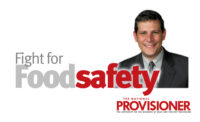The Food Safety Culture Challenge

In early 2011, Congress passed the Food Safety Modernization Act (“FSMA”). The new legislation, which was signed into law quickly, was designed to improve the overall safety of FDA-regulated products. FSMA accomplished this by mirroring many of the FSIS HACCP requirements applicable to the meat industry, such as requiring a written food safety plan, a hazard analysis, and preventive controls.
FDA’s efforts to improve the overall safety of food did not stop with the passage of FSMA. More recently, the agency announced new initiatives to improve safety further. As part of what FDA calls the “New Era of Smarter Food Safety,” the agency will begin focusing on, among other things, the development and promotion of food safety culture within food facilities. According to FDA, food safety can be enhanced at the industry level by working to influence the core “beliefs, attitudes, and… behaviors of people” working in a food company. If a company has a good food safety culture, the theory goes, the company will make decisions that increase, as opposed to decrease, the safety of their products.
So, will USDA follow suit and issue agency guidance, rules, or regulations designed to promote food safety culture within the meat industry? Given the visibility and attention FDA is attaching to the importance of food safety culture in FDA-regulated facilities, it is almost certain that FSIS and its leadership also will be asking whether, and to what extent, the concept of food safety culture should be used as a tool by the agency in federal establishments. That, of course, will cause industry to ask if such requirements were to be issued, what would they look like?
One of the key challenges when attempting to assess the existence and nature of the food safety culture in a facility is how to objectively do so. Reasonable minds might disagree about whether a food safety culture exists in an establishment, and if one does exist, whether it is good, average, or bad. Because assessing food safety culture is inherently subjective, it would be difficult to quantify and then characterize the nature and level of food safety culture in a fair and uniform manner.
Imagine, for instance, if a FSIS inspector issued your company a string of Non-Compliance Reports (NRs) for failing to have an “adequate” food safety culture. We have seen FDA inspectors make such statements in their own inspectional documents, so it is not impossible to imagine FSIS someday following suit. In turn, the appeal of any such NRs would create additional challenges as culture is difficult to assess and quantify – especially if it is being done by someone from afar without actually being in the facility.
So, what does the future hold? Time will certainly tell. But, in the meantime, it may be prudent to start thinking about your own food safety culture, and how it might be judged by FSIS in your own facility.
Looking for a reprint of this article?
From high-res PDFs to custom plaques, order your copy today!








